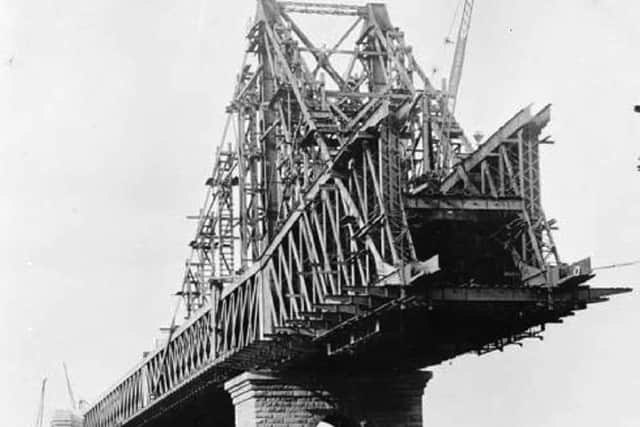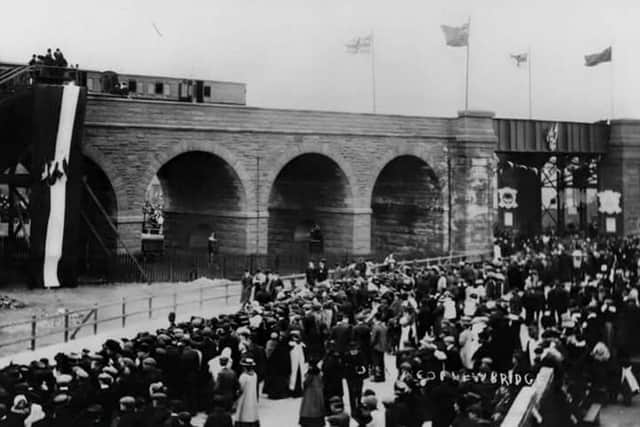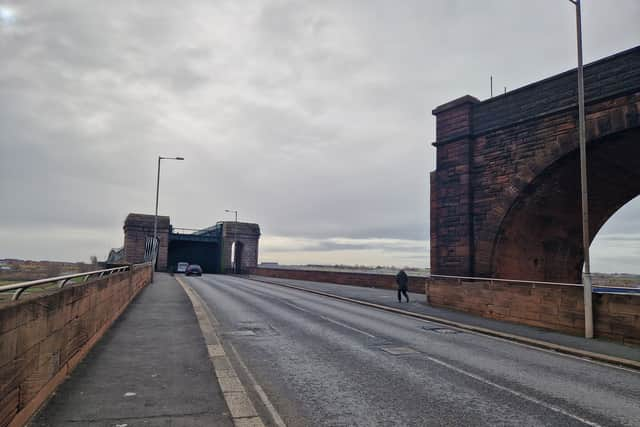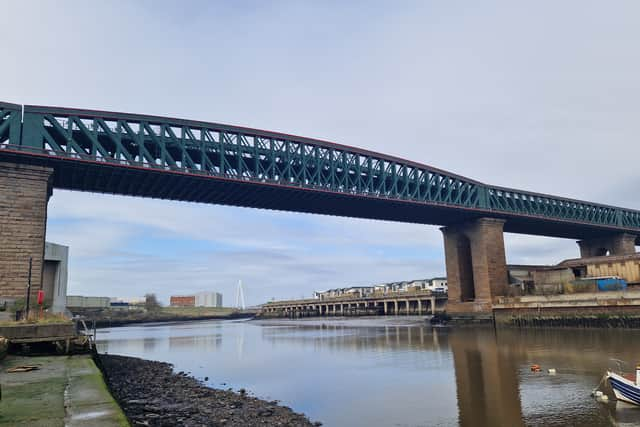The building of Sunderland's magnificent Queen Alexandra Bridge, and the anger it caused in Southwick
and live on Freeview channel 276
The Queen Alexandra Bridge, connecting Southwick and Pallion for well over a century, is perhaps not the best known of Sunderland's bridges to cross the Wear - but it might well be the most interesting.
As it has been there for longer than any living person can remember, we tend to take it for granted. However, it is worthy of closer examination than it tends to receive and its initial success and subsequent decline were inextricably linked with the coal industry.
Advertisement
Hide AdAdvertisement
Hide AdWe shall start with why the road, pedestrian and rail (yes, rail) bridge was built in the first place - and how.
Planning and building
In the late 19th century there was a definite need to connect the collieries of Washington and Annfield Plain with the South Dock, now Port of Sunderland. Coal was extremely important to the entire nation. Road travel was in its infancy and trains and ships couldn't move without the black stuff.


In 1899 the North Eastern Railway Company and transport body the Sunderland Corporation (disbanded in 1973), agreed that a railway bridge would be built to transport the coal.
This construction would eventually require 20,000 bolts, 8,500 tonnes of steel and 350,000 bricks, comprised of 4,000 tonnes of Norwegian granite and 60,000 tonnes of Dumfriesshire red sandstone. It was to be a whopper.
Advertisement
Hide AdAdvertisement
Hide AdToday it has a 91-metre (330 ft) span. As per the requirement of a clause in the North Eastern Railway Act 1900, it stands at least 85 feet over the water to allow ships to pass. In 1900 two shipyards operated immediately below; Doxford's in Pallion and Pickersgill's in Southwick.
Cost was publicised at the time as £350,000, but was actually around £450,000; equivalent to approximately £67 million in 2024.
It was to be a two-level bridge with trains travelling on its upper lever and a road below, suggesting some foresight and that the internal combustion engine was being taken seriously. This would prove to be very perspicacious.
The truss bridge was designed by one Charles A Harrison, who laid the foundation stone on the north tower on July 4, 1907 along with another bloke whom we shall return to. Work had begun in 1904.
Advertisement
Hide AdAdvertisement
Hide AdThe builders were Glasgow civil engineers Sir William Arrol & Co, who had completed the famous Forth Rail Bridge in 1889. The Queen Alexandra Bridge's central span is three times heavier than that of the Forth Bridge. Indeed, when it opened it was the heaviest bridge in the UK.
What became the Queen Alexandra Bridge was constructed using a temporary cantilever. It was built simultaneously from north and south until it met itself in the middle after seven months of steel construction, on October 15, 1908.
And how clever is this? When the two halves were complete there was a deliberate gap of one-and-a-quarter inch (32mm); at about noon on October 15 the temperature rose, thereby expanding the steelwork and closing the gap with total precision. Genius.
Sunderland-Southwick rivalry
There were reports at the time of resistance to the bridge in Southwick. The village would not become part of Sunderland until 1928, prior to which it was a township in its own right.
Advertisement
Hide AdAdvertisement
Hide AdSouthwick folk saw the bridge as a further threat to their independence - correctly as things transpired. However, there is no such antagonism today and if there was ever a "Sexit" movement to take back control of Southwick, it's consigned to history.
Grand opening and credit claiming
The person named alongside Charles A Harrison on the foundation stone is the Right Honourable John Lloyd Wharton 1837-1912, although the reasons for this seem sketchy.
Wharton had been Conservative MP for Durham, but not since 1874 and we don't know what his direct contribution, if any, was to the bridge. However, his uncle had been William Lloyd Wharton, chairman of North Eastern Railway and Johnny was a director.
This was enough for a voracious credit-claimer to have his name etched on the stone; which today is rarely seen as it is almost inaccessible.
Advertisement
Hide AdAdvertisement
Hide AdHow on earth did a humble, well-connected Old Etonian manage such an honour, along with all the other gongs and titles that were lobbed his way?
Perhaps back then, just maybe, those in the know were given honours for reasons which weren't immediately obvious. It's possible you know.
The Queen Alexandra Bridge is named after the Danish consort of Edward VII, a flabby philanderer and son of Queen Victoria. He was king from 1901 to 1910.
Was Alexandra a good choice for the honour? Jimmy Montgomery would not be born until 1943, so she would have to do.
Advertisement
Hide AdAdvertisement
Hide AdIf the queen was flattered by the naming, her appreciation did not extend to attending the bridge's official opening on June 10, 1909. Apocryphal tales were concocted about her reasons for giving it a miss; including an unswerving devotion the palace stitch 'n bitch group.
So off the subs' bench came John Lambton, 3rd Earl of Durham and best known then for the affair he had with a dancer called Letty Lind, who bore his son while his wife was in a mental institution.
Anyway, the North Eastern Railway company issued a medal to mark the opening. The queen is not referred to on the medal although, true to form, the name of the Right Honourable JL Wharton features prominently and no doubt he pinned one to himself with great ceremony.


Success - and failure
September 20, 1909 saw the first freight train to roll over the bridge. No passenger train would ever do so.
Advertisement
Hide AdAdvertisement
Hide AdInitially rail freight over the bridge was a big success with up to 6 million tonnes of coal transported annually. But coal exports from the port would decline and the last train crossed the bridge in 1921; so long ago now that most Sunderland citizens today are unaware that "the Alex" was ever a rail bridge.
For its first 20 years it wasn't popular with road users either, due to the toll which was charged. It was a long diversion over the Wearmouth Bridge if you were a bit skint.


And now...
It then became pretty much as we know it today, but not quite. During World War II the former train deck was used to site anti-aircraft guns and searchlights.
The most notable change came in 1985, when the railway's approaches at each end were removed to accommodate alterations to its approach roads and giving it a slightly unfinished look, particularly at the north end where some of the brickwork remains unattached.
Advertisement
Hide AdAdvertisement
Hide AdIt was partially closed between March 2005 and October 2006 for a £6.3 million renovation. A further £420,000 of improvements were made in 2021 to remove cables, rail deck and abutments that had been there since 1985.
It may not have completely met the hopes of those who first envisaged it in the 19th century, but the Queen Alexandra Bridge remains a crucial artery of Sunderland; the 2018 opening of the Northern Spire Bridge notwithstanding.


In 1984 it was awarded the protection afforded by Grade II listed status; a welcome development, yet perhaps somewhat superfluous as even without the listing it would hardly be likely to be dismantled.
So take time when you can to stare at the bridge from a distance; because it's also beautiful. What is this life, if full of care... and all that.
*Our thanks to Phil Curtis of the Sunderland Antiquarian Society.
Comment Guidelines
National World encourages reader discussion on our stories. User feedback, insights and back-and-forth exchanges add a rich layer of context to reporting. Please review our Community Guidelines before commenting.